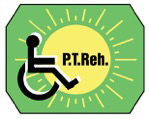


|
Current issue
Archive
Manuscripts accepted
About the journal
Editorial board
Reviewers
Abstracting and indexing
Contact
Instructions for authors
Publication charge
Ethical standards and procedures
Editorial System
Submit your Manuscript
|
4/2025
vol. 39 abstract:
Original paper
Validation of LEXO® end-effector robot-assisted training in patients with gait deficits after central nervous system diseases: a descriptive cross-sectional study
Adv Rehab. 2025; 39(4): 1-15.
Online publish date: 2025/06/17
View
full text
Get citation
ENW EndNote
BIB JabRef, Mendeley
RIS Papers, Reference Manager, RefWorks, Zotero
AMA
APA
Chicago
Harvard
MLA
Vancouver
Introduction
Multiple interventions to improve gait function after Central Nervous System (CNS) disorders have shown efficacy. High-intensity, repetitive, activity-specific training is beneficial for gait rehabilitation, with end-effector robot-assisted gait training (RAGT) devices becoming more significant. This study evaluates the new LEXO® end-effector RAGT device for patients with walking impairment due to CNS disorders in an outpatient setting. The aim is to describe the effects of the LEXO® robotic system on functional independence and gait parameters. Material and methods In a descriptive observational cross-sectional case series, 50 patients with gait deficits due to CNS disorders underwent 20 sessions of RAGT using LEXO®, each lasting 10 to 45 minutes. Outcome measures included functional independence (Functional Independence Measure (FIM) and Barthel Index (BI)), quality of life (Euro-Qol-5D (EQ-5D) and Stroke Impact Scale (SIS)), walking endurance (6 Minute Walk Test (6MWT)), fall risk (Time Up and Go (TUG)), and gait parameters (speed, cadence, and stride length) measured with PABLO®. Results Significant improvements (p = .000) were observed in functional independence and quality of life. Endurance (p = .000) and fall risk (p = .018) also improved. Statistically significant differences were noted in gait parameters: walking speed (p = .000), cadence (p = .010), and stride length (p = .007). Conclusions Training with the LEXO® device may improve functional independence, quality of life, endurance, and gait parameters (walking speed, cadence, and stride length) and reduce fall risk in people with CNS disorders. These promising results warrant further validation through additional research studies. keywords:
Robotics, Functional Independence, End-effector, Robot-assisted gait training, Gait rehabilitation |
    |